how to make pie crust
Homemade Pie Crust
This post may contain affiliate links. Please read my disclosure policy.
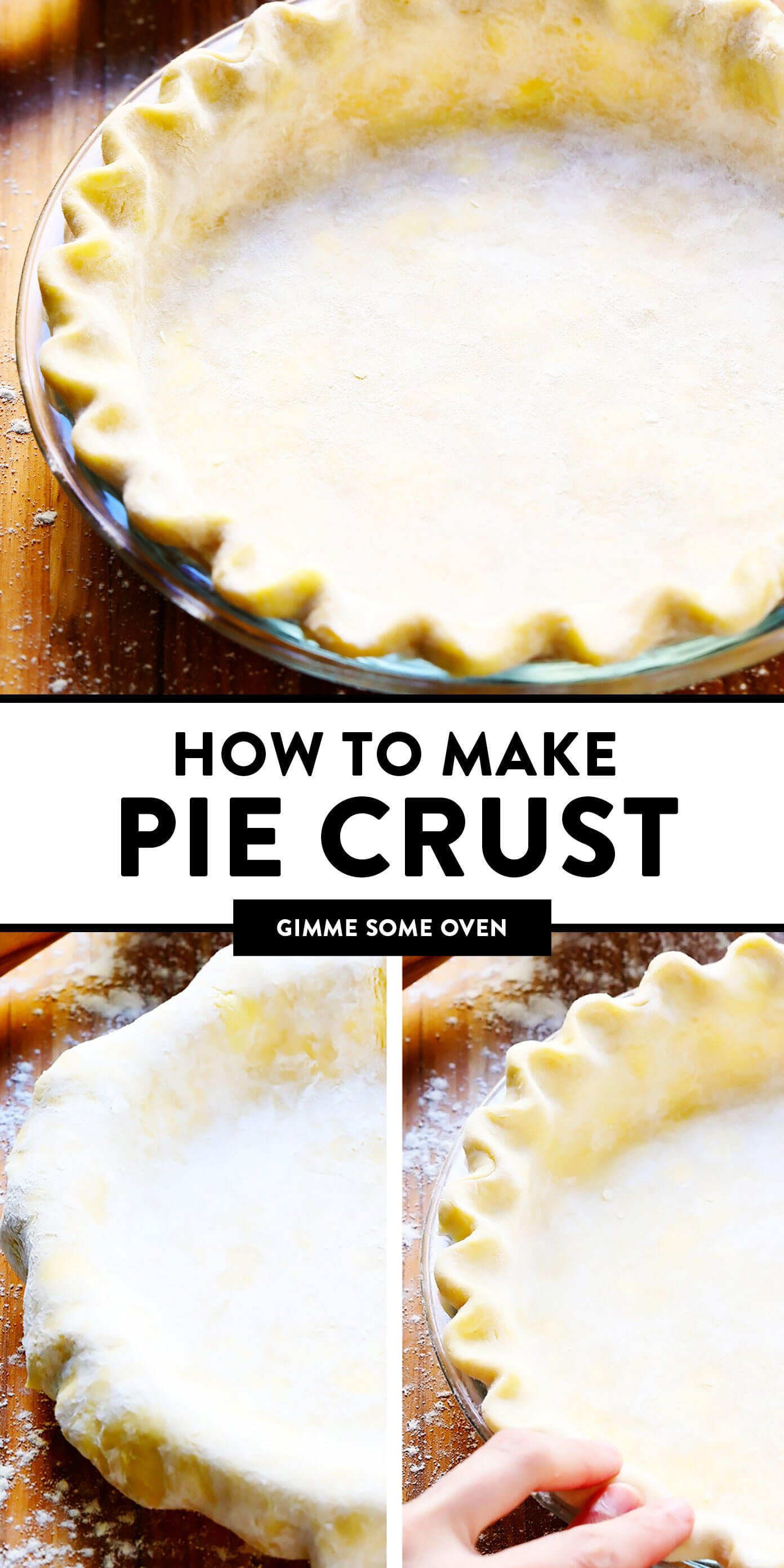
A step-by-step photo tutorial for how to make a pie crust — either 100% by hand or with the help of a food processor — featuring my favorite all-butter homemade pie crust recipe.
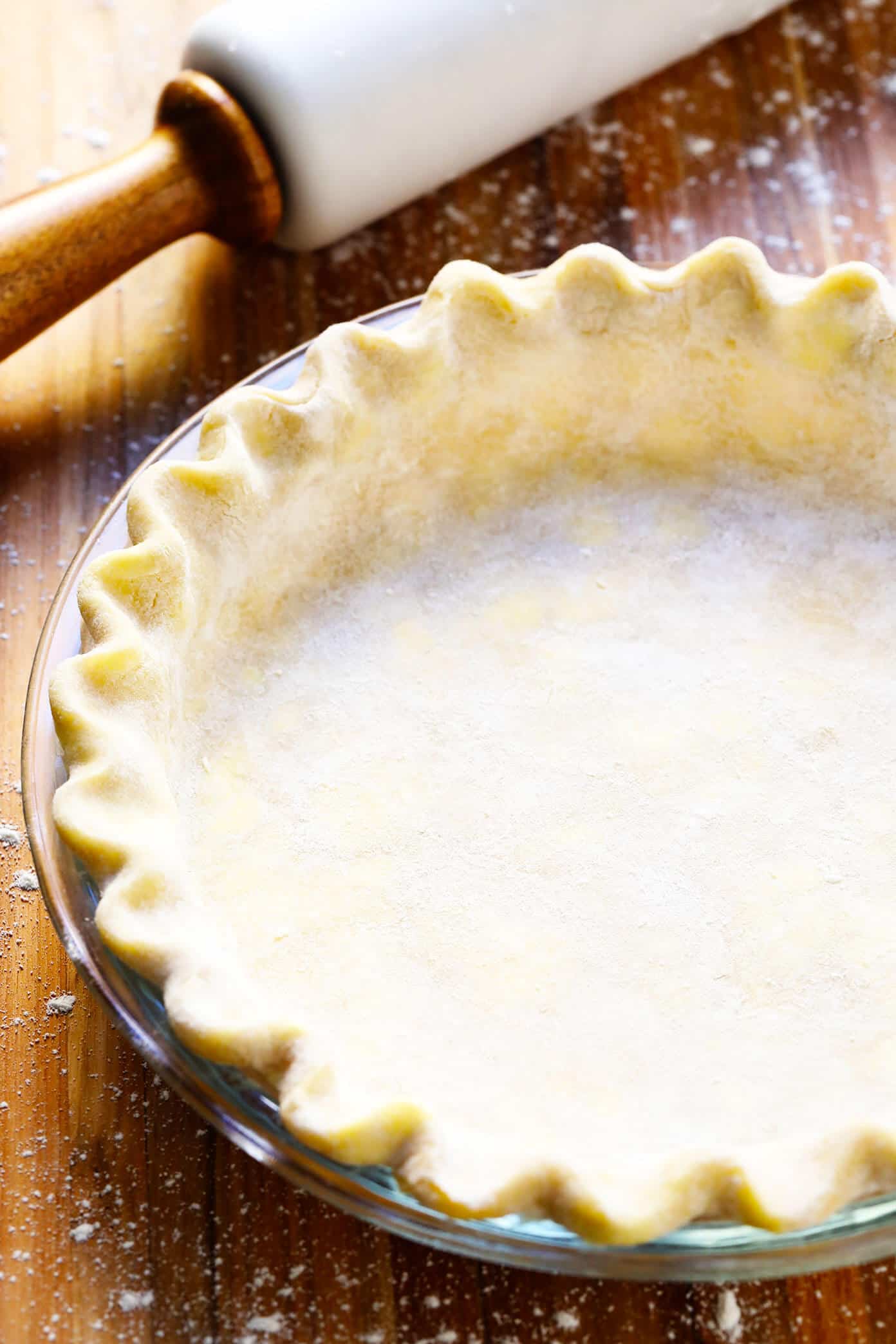
I hope that your holiday baking seasons are off to a delicious start! I have two new (naturally-sweetened) pie recipes coming your way later this week that I'm pretty excited about. But before we get to those, I thought it might be helpful to go back to the basics today with a quick refresher on how to make pie crust…
…featuring my go-to, all-butter, perfectly-flaky, easy-to-make, always-delicious homemade pie crust recipe. ♡
As someone who used to be 100% intimidated by the art of making pie crust from scratch, I'm here today to assure you that homemade pie crust is genuinely much simpler than you might think! All you need are 5 easy ingredients to make pie crust — flour, butter, salt, sugar (optional) and ice water — plus about 15 minutes of active prep time if you would like to make this recipe completely by hand. (Or less than 10 if you happen to own a food processor, which makes this recipe even easier.) Then after just a few simple steps, the most delicious, golden, buttery, flaky homemade pie crust will be ready to bake up in no time.
I initially shared this classic pie crust recipe here on the blog six years ago when I was first venturing into the world of pie crust baking. But now, dozens and dozens of pies later, I'm back today with a big update on this post, including some of the best tips and tricks I've learned in these past few years of pie baking, plus new step-by-step photos for how to make this recipe either with a food processor or completely by hand. So whether this is your very first time making pie crust or your fiftieth, my hope is that there will be a little something helpful here for everyone today, and that this recipe might make your holiday season all the more delicious and bright.
Alright, grab your rolling pins and let's make some homemade pie crust!
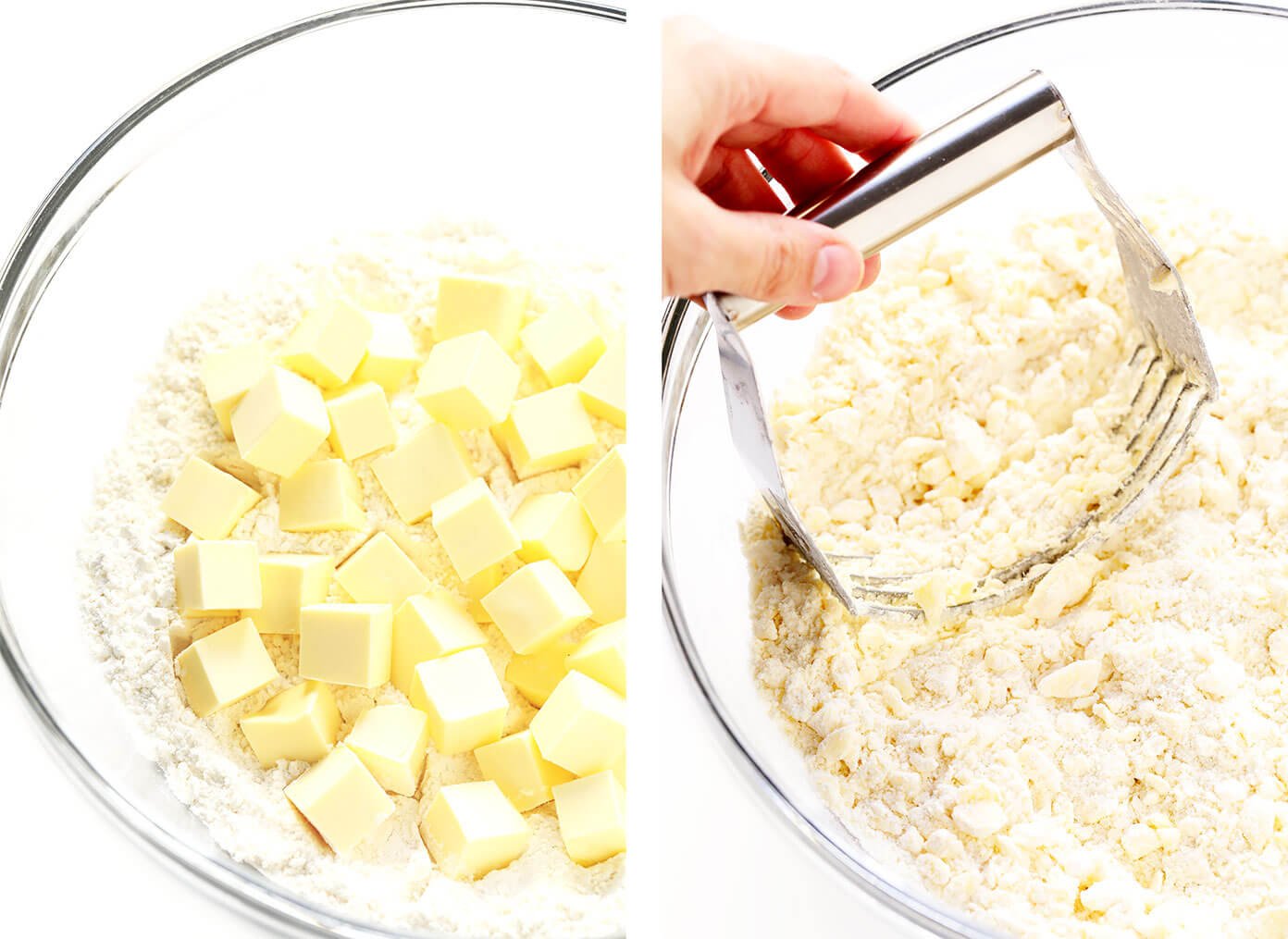
How to make pie crust by hand with a pastry cutter
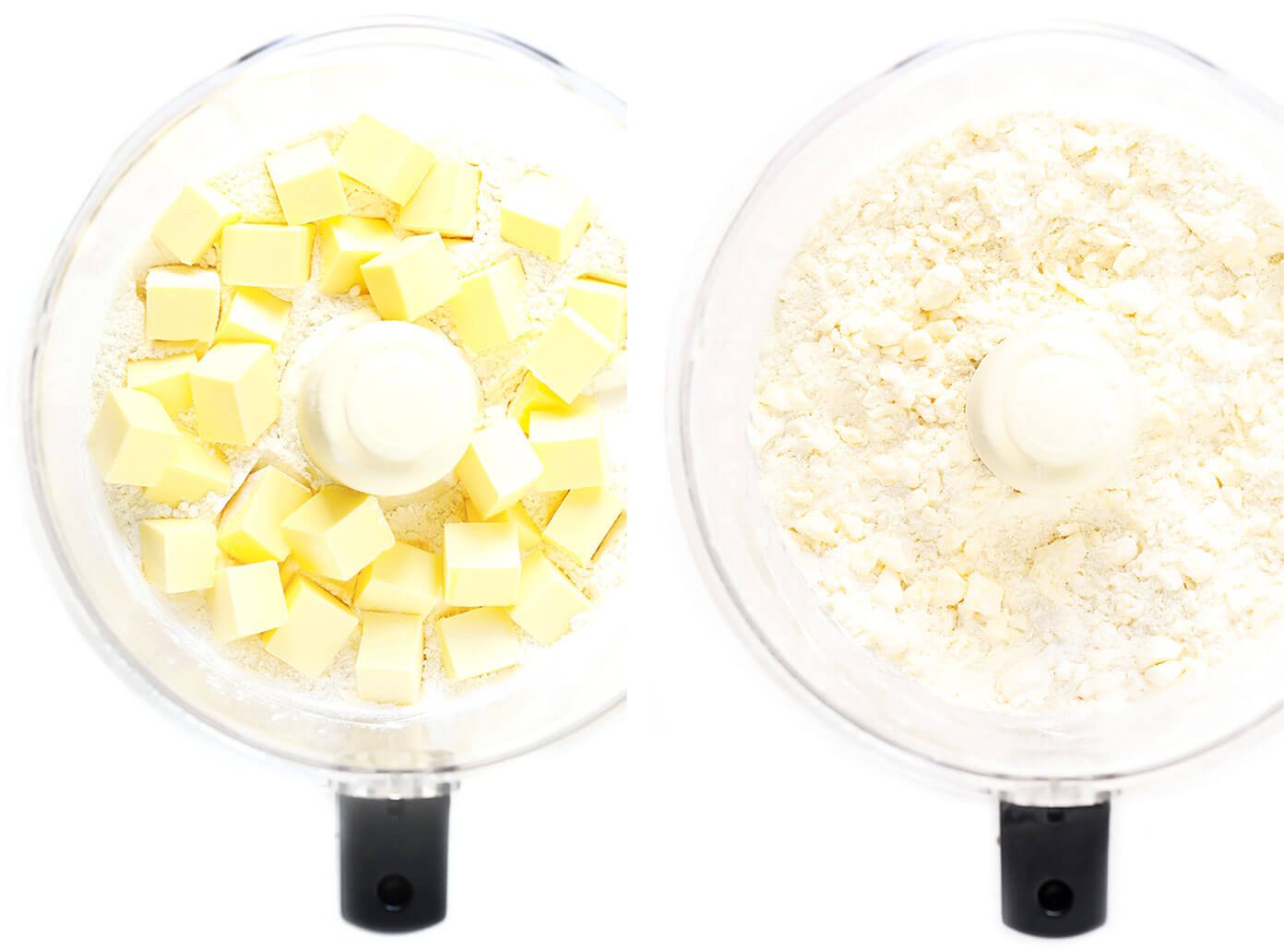
How to make pie crust with a food processor
Pie Crust Ingredients:
Alright, before we get to the recipe, let's start with some ingredient notes. To make this homemade pie crust recipe, you will need these 5 simple ingredients:
- All-purpose flour:We're going classic with regular all-purpose flour here. I highly recommend using a kitchen scale to accurately measure the flour, if you have one. If not, just remember to scoop the flour with a spoon into your measuring cup and level it off with a knife, rather than scooping your measuring cup into the bag of flour itself (to prevent over-packing your measuring cup).
- Sugar (optional):I like to add about a tablespoon of sugar to my pie crust recipe for a hint of sweetness. But you are welcome to leave this out if you would like an unsweetened pie crust.
- Salt:To bring out the flavor of the pie dough.
- Cold unsalted butter: Which we will roughly dice into 1/4-inch cubes, so that the butter can be mixed into the dry ingredients more easily and evenly. Also, you want the butter to be completely chilled when it is added to the recipe. So I recommend adding the butter to the dry ingredient mixture immediately after it has been diced.
- Ice water:It's also important that your ice water be as cold as possible when it is added to the dough. I typically keep a cup of ice water near my baking station all ready to go, then strain the cold water into a measuring cup seconds before adding it to the dough. Some people also like to use a 50/50 mixture of ice water and frozen vodka to ensure that the liquid is as chilled as possible, which you are welcome to do if you would like. (I've experimented with both methods over the years, but honestly can't tell that big of a difference with the vodka trick, so I usually just stick with ice water.)
Pie Crust Equipment:
To make homemade pie crust, you will also need the following tools:
- Food processor or pastry cutter or two forks: If you happen to own a food processor, it makes cutting the butter into the flour a breeze. If not, no worries, you can also easily do so by hand with either a pastry cutter or with two forks. (See instructions for all methods below.)
- Mixing bowl: You will need a large mixing bowl (I recommend either a glass mixing bowl or a stainless steel mixing bowl) to mix the ice water into the dough.
- Rolling pin: Either a standard rolling pin (ideally at least 12 inches long) or a flat rolling pin. I find that this marble rolling pin works especially well with this recipe, as the cool marble has the added bonus of keeping the dough nice and chilled while rolling.
- Glass pie plate:I like baking pies in glass pie plates because they conduct heat much more evenly than ceramic or metal pie plates. But that said, any pie plate that you own will do. ♡
- Pastry brush (optional): Which you can use to brush the crust with an egg wash before baking, if you would like your crust to be nice and golden.
- Kitchen scale (optional):Which I highly recommend to weigh your ingredients (especially the flour) for accurate measuring.
- Pie crust shield (optional):Which can help to prevent the edges of your crust from burning in the oven, especially for recipes that require a longer baking time. (Alternately, you can just use a strip of aluminum foil to gently cover the edges of the crust.)
- Pie weights or dried beans (for blind baking): Which you will need if your recipe requires that you blind-bake the pie crust, in order to prevent the center of the crust from rising as it bakes. I prefer using pie weights, but a bag of dried uncooked beans will also work as a substitute. You will also need to place a sheet of parchment or foil between the pie crust and the weights, in order to prevent them from sticking. (See instructions below.)
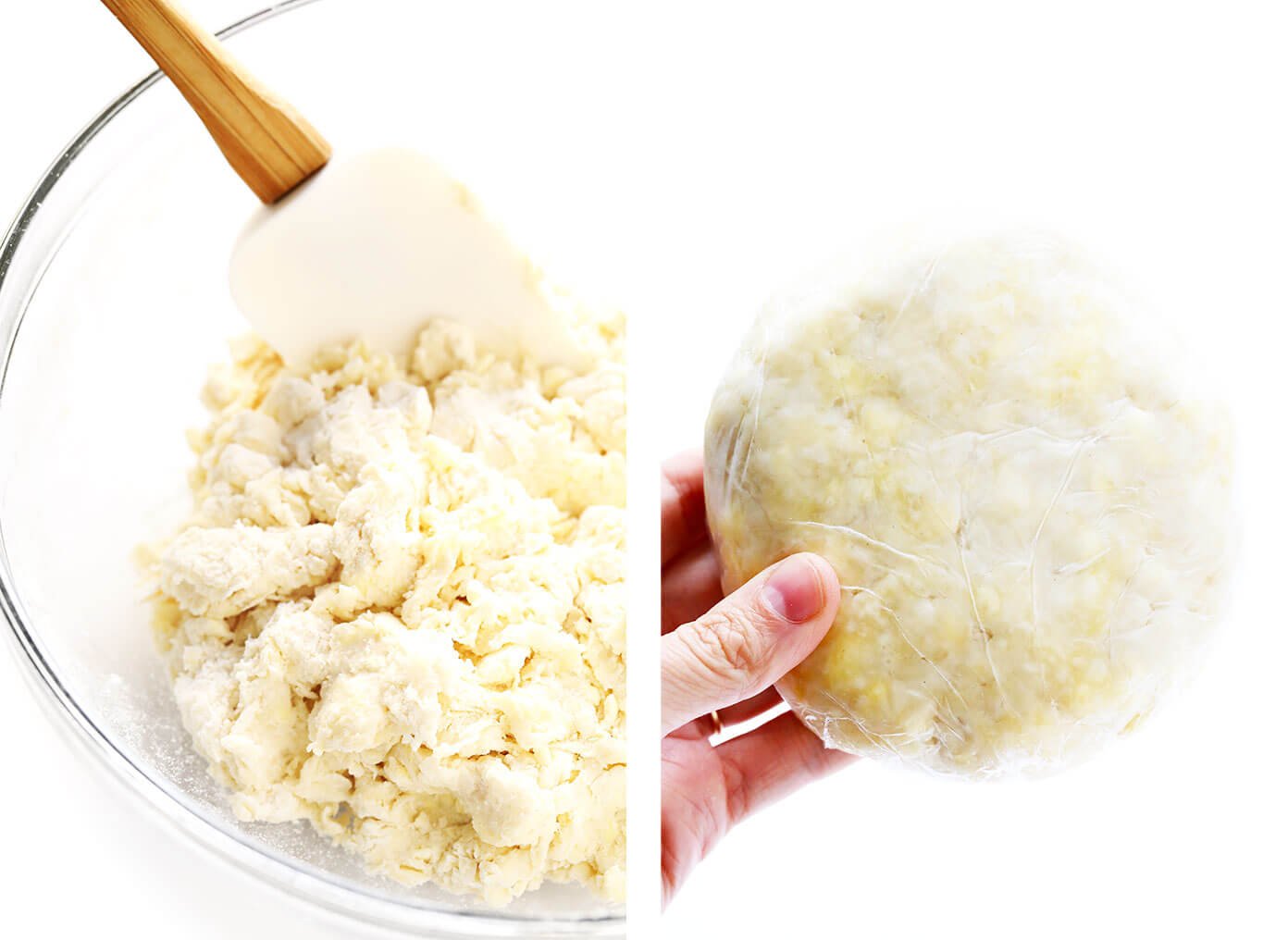
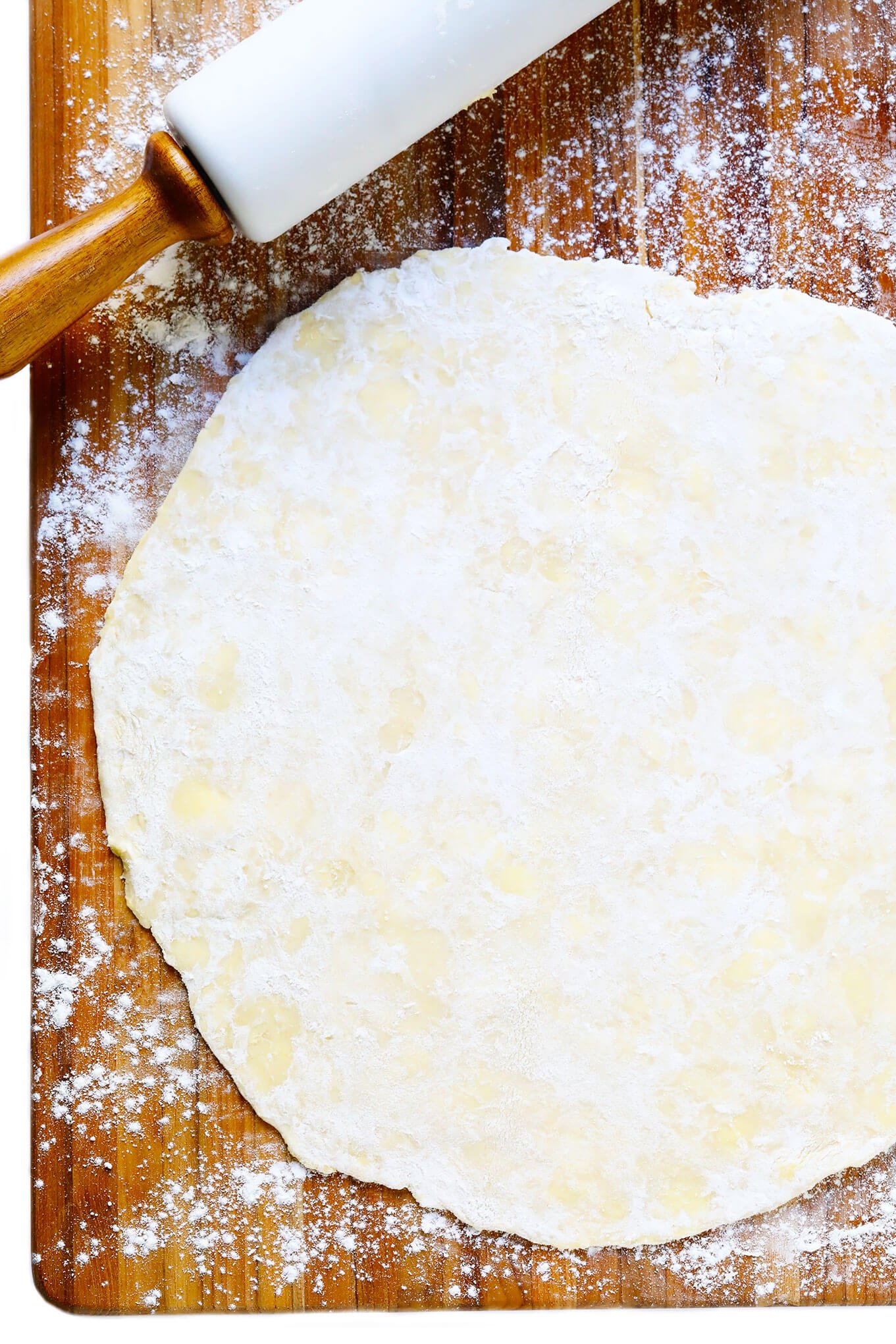
How To Make Pie Crust:
Full detailed steps for how to make pie crust by hand or in a food processor are detailed in the recipe box below. But in a nutshell, you will simply need to…
- Mix the dry ingredients. Either whisked together in a mixing bowl, or pulsed together in a food processor.
- Cut the butter into the dry ingredients: (This is just baking lingo for mixing cold butter into flour.) You can either do this step by hand using a pastry cutter or two forks, or you can do it in a food processor with a few brief pulses. Cut the butter into the dry ingredients until it forms roughly pea-sized clumps. (It's ok to see some clumps!)
- Add water: While the butter is still nice and cold, use a spatula to quickly mix the ice water into the dough until it is evenly combined and the dough begins to form moist clumps. (If the dough is not sticking together, you can add 1 or 2 more tablespoons of water to help it clump.) Be careful not to overmix the dough during this step of the process; you don't want to overwork the gluten.
- Form a dough ball: Using your hands, quickly pack the dough into a ball (like you're packing a snowball) and then flatten it into an even disk.
- Wrap and chill the dough: Wrap the dough disk tightly in plastic wrap and refrigerate it for at least 1 hour, or up to 3 days. Then it will be ready to use!
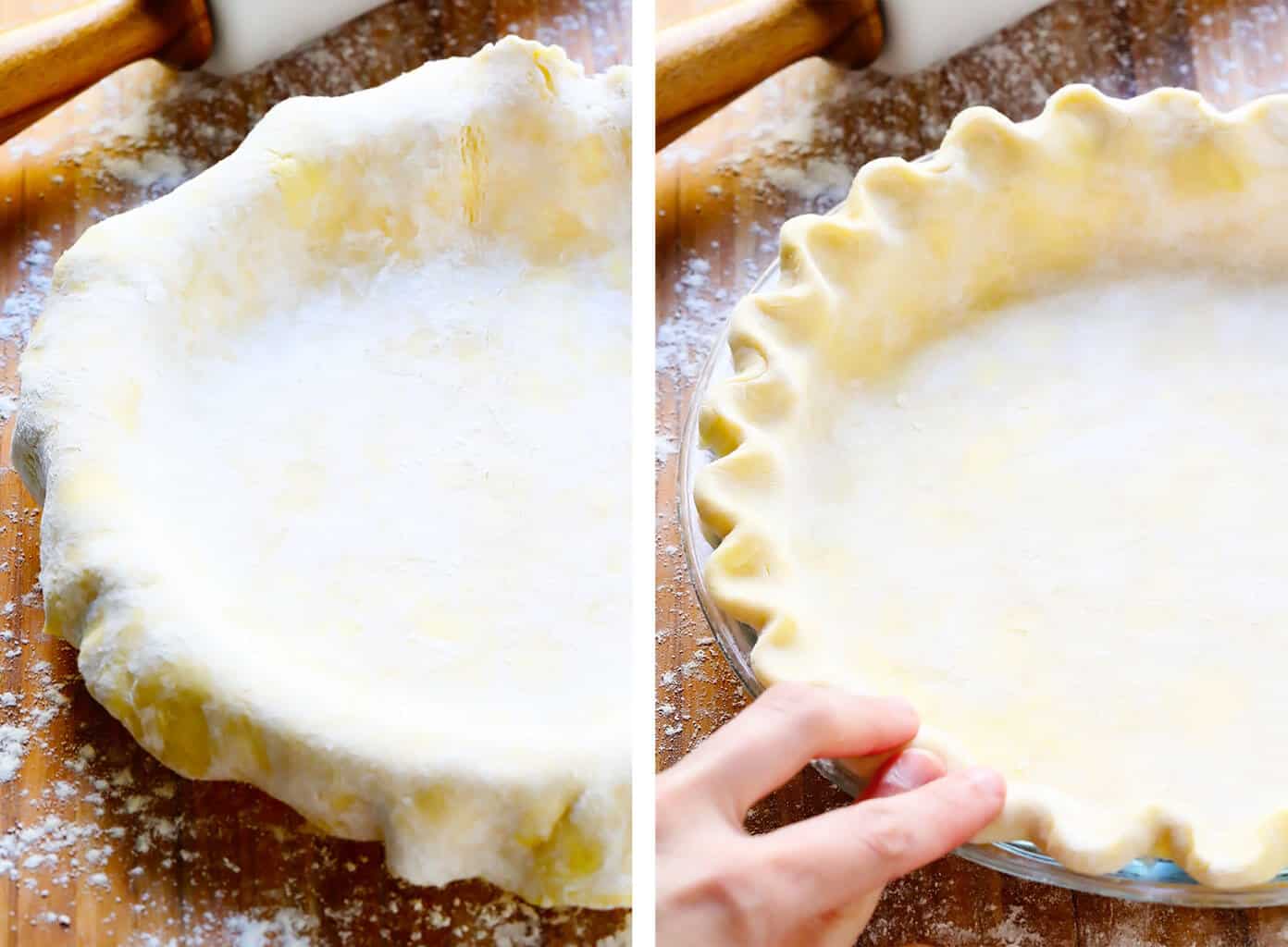
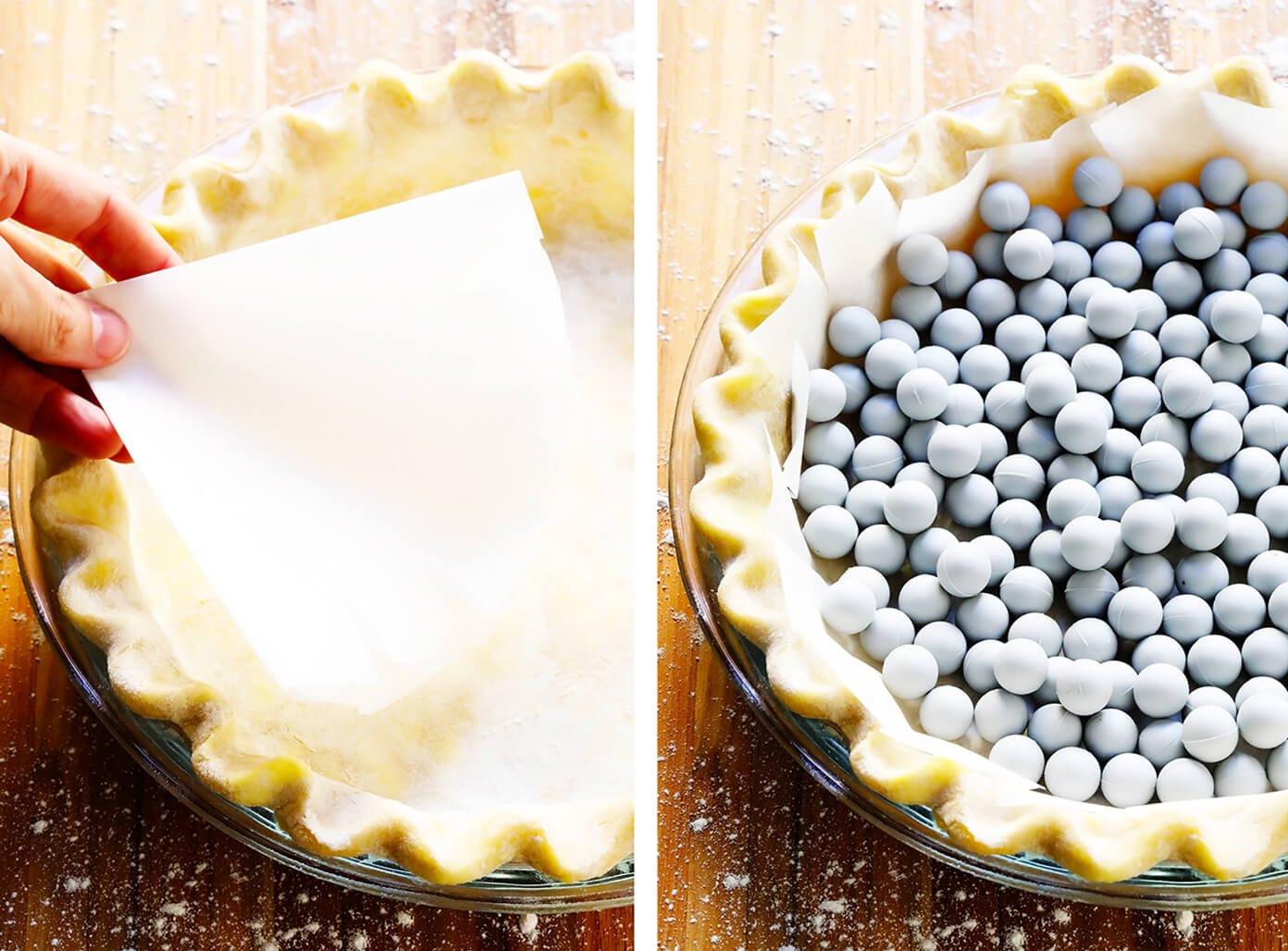
Important Pie Crust Tips (Please Read!):
- Above all — keep everything as chilled as possible! In order to prevent your pie crust from shrinking and hardening and losing that precious flakiness, it's super important that you try to keep all of your ingredients as chilled as possible when making pie crust. This includes making sure that you use ice water and fresh-outta-the-fridge chilled butter. And also that you try to avoid letting the ingredients/dough sit out for too long, and that you also avoid working the dough too much with your warm hands. Basically when it comes to pie crust, the chillier you can keep the dough, the better!
- Measure your ingredients accurately. As I mentioned above, I super-recommend using a kitchen scale in order to measure your ingredients accurately (especially the flour). It's easy to accidentally add too much flour if you are scooping it into a measuring cup by hand. And for anyone living outside of the United States, where butter is usually sold in larger blocks instead of sticks, it's essential to measure your butter accurately too.
- Don't overwork the dough.It's also important to avoid overworking (over-mixing) the dough, especially during the steps when you are adding in the water, forming the dough into a disk, and eventually, when you are rolling it out on a cutting board.
- Don't skip the resting/chilling times. These areessential parts of this recipe. The gluten in the dough needs time to rest (and/or chill) in between certain steps. Otherwise, the pie crust will shrink once it bakes in the oven.
- Don't stretch the dough.When you reach the process of rolling out and transferring the dough into a pie plate, try to avoid pulling or stretching the dough to create your desired shape. If you have a hole or need to extend the edges on one side, it is better to cut off and press some excess dough into that spot, versus trying to stretch the dough.
Favorite Pie Recipes:
Stay tuned for two new pie recipes coming to the blog later this week! In the meantime, here are a few more of my faves:
- The Best Pumpkin Pie
- French Silk Pie (Chocolate Pie)
- Lemon Meringue Pie
- Pecan Pie
Description
My favorite all-butter pie crust recipe — easy to make either 100% by hand or with the help of a food processor. See notes above for more helpful tips. (This recipe makes enough for one standard 9-inch pie crust. Please double the recipe if you need a double crust.)
- 1 1/4 cups (150 grams) all-purpose flour
- 2 teaspoons granulated sugar (optional)
- 1/2 teaspoon salt
- 1/2 cup (115 grams) cold unsalted butter*, diced into 1/4-inch cubes
- 1/4 cup ice water
- Mix the dry ingredients: Combine the flour, sugar (optional) and salt in a large mixing bowl or a food processor. Whisk or pulse briefly until combined.
- Cut the butter into the dry ingredients: Sprinkle the diced butter evenly over the dry ingredient mixture. If working by hand, use a pastry cutter or two forks to cut the butter into the dry ingredients until the butter is evenly dispersed into pea-sized (or smaller) bits. If using a food processor, briefly pulse the butter and dry ingredients together 5 to 7 times until the butter is evenly dispersed into pea-sized (or smaller) bits, then transfer the mixture to a large mixing bowl.
- Add water: Sprinkle the dough evenly with the ice water. Use a spatula to quickly mix the water into the dough until it is evenly combined, and the dough begins to form moist clumps. (If the dough is not sticking together, you can add 1 or 2 more tablespoons of water to help it clump.) Try not to overmix the dough.
- Form a dough ball: Using your hands, quickly pack the dough into a ball (like you're packing a snowball). Then flatten the ball into a 3/4-inch thick disk.
- Wrap and chill the dough: Wrap the dough disk tightly in plastic wrap, then refrigerate for at least 1 hour, or up to 3 days, until ready to roll out and use.
Notes
*Chilled butter:You want the butter to be fresh-out-of-the-fridge chilled (not frozen, not room temperature) when it is added to the dry ingredients.
To roll out the dough: Once the dough has chilled for at least an hour, transfer the dough to a well-floured work surface and let it rest for 10-15 minutes. Unwrap and lightly dust the top of the dough and the rolling pin with flour. Then gently roll the dough into a circle that is at least 12 inches in diameter and about 1/8 inch thick (the perfect size for a 9-inch pie plate). Carefully transfer dough to the pie plate, and gently press the dough into the sides of the plate without stretching it. Use kitchen shears or a knife to trim off any excess pastry, leaving about a 1-inch border of crust around the top of the pie plate. Carefully lift and fold the outer 1/2-inch edges of the crust back under itself, pinching the crust gently to sculpt an upstanding ridge. Use your fingers to crimp the dough (see photo) to form a scalloped edge, or create whatever other decorative crust design you prefer. Chill pie crust for at least 15 minutes before continuing with your recipe.
To blind-bake the crust: If your recipe calls for a blind-baked (pre-baked) crust, use a fork to poke a few series of holes in the bottom of the chilled crust. Then use parchment paper or aluminum foil to line the inside of the crust, shaping it gently around the inner edges to form a mold of the crust. Fill the bottom of the crust with pie weights or dried beans. Then bake immediately at 400°F for 15 minutes. Remove the pan from the oven, and carefully lift out the foil/parchment and weights and set them aside. If the bottom of the crust has started to bubble up, poke it with the fork a few more times. Return the crust to the oven for 10-12 minutes for a partially baked pre-baked pie shell (it should be lightly browned), or 15-17 minutes for a fully pre-baked pie shell (it should be a deep golden brown).
To make a lattice crust: See my detailed step-by-step photo tutorial for How To Make A Lattice Pie Crust.
For an extra golden or sugary crust: Use a pastry brush an egg wash (an egg whisked together with a splash or milk or water) on the surface of the crust before baking. Sprinkle with a little sugar, too, if desired.
Recipe update: Recipe has been updated slightly in November 2019 to include instructions for how to make a pie crust by hand. I also now recommend mixing the ice water into the dough by hand, versus doing that step in the food processor, as it is easy to accidentally over-mix the water using a food processor.
This post contains affiliate links.
posted on November 18, 2019 by Ali
how to make pie crust
Source: https://www.gimmesomeoven.com/how-to-make-a-pie-crust-recipe/
Posted by: marshrieverl.blogspot.com

0 Response to "how to make pie crust"
Post a Comment